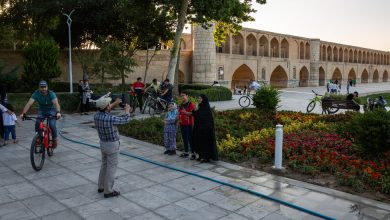Amanda Claridge, Archaeologist of Ancient Rome, Dies at 72

Amanda Claridge, an archaeologist who brought ancient Rome and its surroundings to life — most notably in her often-cited 1998 book, “Rome: An Oxford Archaeological Guide,” which helped inquisitive visitors understand what they were looking at as they wandered that history-rich city — died on May 5 in London. She was 72.
Her brother Jolyon Claridge confirmed her death, in a hospital. A posting by the classics department at the University of London’s Royal Holloway College, where she was an emerita professor of Roman archaeology, said the cause was cancer.
Professor Claridge was in her mid-20s when she became a scholar at the British School in Rome, where she quickly earned a reputation as an expert in sculpture and the marble trade. After teaching at Princeton Universityfor three years in the late 1970s, she returned to the British School in 1980 as assistant director; she served until 1994 and carried out important fieldwork at several sites.
She savored the intricacies of the Roman cityscape.
“Three thousand years of continuous occupation have produced one of the most deeply stratified and complex urban sites in existence,” she wrote in “Rome.”
Her research revealed the details of what, to a casual observer, might seem a homogeneous slice of the long-ago.
“Ancient Rome,” she wrote in the book, “was a place where every temple, basilica, arch, road or aqueduct was potentially a political act: It mattered a great deal who built what, and when.”
Though Professor Claridge wrote numerous scholarly papers, her “Rome” guide was intended for a general reader. After a historical overview, it went through the city temple by temple, arch by arch, describing and explaining. Over the years the book, which was republished in 2010, has drawn praise from many quarters.
“Amanda Claridge’s indispensable ‘Oxford Archaeological Guide to Rome’ makes the stones speak,” the author Elizabeth Speller wrote in The Independent of Britain in 2003. “Not only does she map scrupulous researched history on to the otherwise incomprehensible wealth of ruins but she does so with spirit.”
A fellow historian, Robin Lane Fox, was equally impressed.
“For years, I found most of the ancient monuments almost incomprehensible, especially the Forum, with its scatter of stone foundations and random pillars, where buildings from the fourth century A.D. intrude confusingly into the faint remains of the world of Cicero,” he wrote in The Daily Telegraph of London in 2006. “At last, the place has come to life for me. The essential volume is ‘Rome,’ by Amanda Claridge, an expert archaeologist who has years of familiarity with the sites thanks to her work for the British School in the city. Her book is clear, yet so detailed that it enables you to take a really self-improving holiday.”
Early in her career Professor Claridge was an assistant to the noted archaeologist John Ward-Perkins. Her first major project in archaeology was to curate, with him, “Pompeii AD 79,” an exhibition of art from the doomed city that was mounted at the Royal Academy in London in 1976 and later came to the United States.
It was an early chance for her to explore both the differences between ancient and modern times and the similarities. In 1976 a reporter for The Daily Telegraph of London asked her about the garden statuary of Pompeii and whether it was similar to the gnomes some present-day gardeners like to place among their plants.
“Their statues of satyrs were much the same thing,” she agreed. “The difference is that their garden sculpture was vaguely erotic.”
Erotic paintings were also common in Pompeii, but they were not a major element of that 1976 exhibition. This was partly because most were wall paintings not easily transported, but also because — well, Professor Claridge, at least, wasn’t impressed.
“They are not really terribly interesting,” she told The Daily Telegraph. “The pornography is of fairly low character.”
Amanda Jacqueline Claridge was born on Sept. 1, 1949, at a Royal Air Force hospital near Wendover, England. Her father, John Gaskin Claridge, had been a bomber pilot during World War II, and her mother, Marie Innes (Cooper) Claridge, had been an intelligence officer.
Professor Claridge said she had been interested in archaeology since she was a young girl. She earned an undergraduate degree at the Institute of Archaeology in London and, as a tribute posted by Royal Holloway put it, “was one of the last generation of scholars who did not need a doctorate to pursue an academic career.”
Among the projects she oversaw was the excavation, beginning in 1983, of Vicus Augustanus, a settlement for workers on an estate used by Roman emperors. In 1994 she returned to England to work at the Institute of Archaeology. She moved to Royal Holloway in 2000.
Professor Claridge, who lived in London, is survived by her brother. A younger brother, Michael, died in 2015.
Richard Alston, head of the classics department at Royal Holloway, said that in addition to her own scholarship, Professor Claridge was generous with help and advice.
“If one had a problem understanding anything in the archaeology,” he said by email, “it was to Amanda one wrote, and it was from Amanda that one received the answers one needed.”




